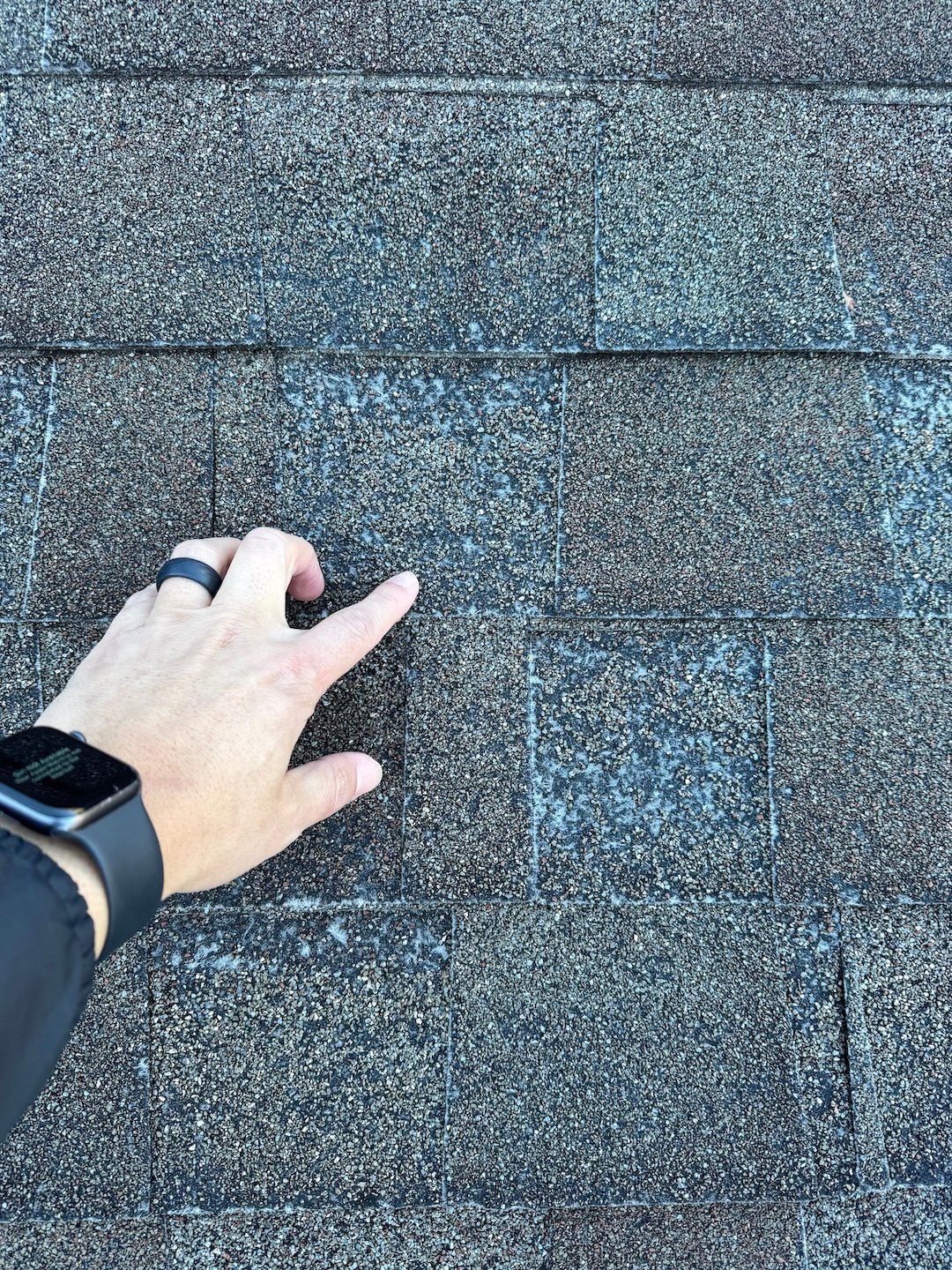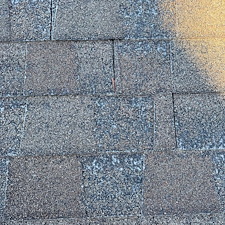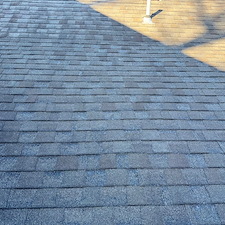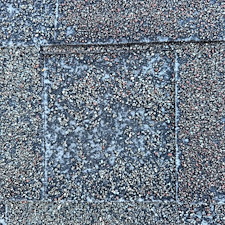Quality Roofing Contractors in Kansas City
November 27, 2024

When roof shingles lose granules and expose the underlying fiberglass or other reinforcement fibers, it’s a sign of wear and aging. Granules are the small, colored particles that coat asphalt shingles, and they play a crucial role in protecting the roof from various elements. Here’s an explanation of what happens when shingles lose granules and the impact it can have on your roof:
1. What are Granules?
Granules are small, hard particles that are embedded into the surface of asphalt shingles. They serve multiple purposes, including:
UV Protection: Granules help block harmful UV rays from the sun, which can degrade the asphalt material over time.
Weather Resistance: They protect the underlying asphalt from rain, snow, and ice, preventing water from seeping into the layers beneath.
Aesthetic Appeal: Granules give shingles their color and texture, contributing to the overall curb appeal of the roof.
Fire Resistance: The granules also help improve the fire resistance of the shingles.
2. Causes of Granule Loss
Granule loss is a natural process that occurs over time, but it can be accelerated by several factors:
Age of the Roof: As shingles age, the bonding between the granules and the asphalt weakens, causing the granules to loosen and wash away. This is a normal part of the roof’s life cycle, particularly for older roofs (10-20 years old or more).
Severe Weather Conditions: High winds, hail storms, and heavy rain can cause granules to become dislodged and washed off the shingles.
Improper Installation or Poor Quality Shingles: Low-quality shingles or improper installation can make the granules more prone to shedding prematurely.
Roof Foot Traffic: Walking on the roof can cause granules to loosen and wear away, especially in areas where the shingles are already weak.
Dirty Roof or Moss Growth: Accumulation of debris or moss on the roof can increase the wear on shingles, causing more granules to come loose.
3. Impact of Granule Loss
Granule loss exposes the fiberglass matting or other reinforcing materials beneath the shingle surface. This can have several consequences:
Decreased Durability: Once the granules are gone, the underlying layers of the shingles become more vulnerable to the elements, especially UV rays and rainwater. This can significantly shorten the lifespan of the roof.
Increased Risk of Leaks: Without the protective layer of granules, water is more likely to penetrate the shingles, leading to leaks, water damage, and potential mold growth.
Aesthetic Decline: Granule loss leads to discoloration of the shingles, which can make the roof look aged and worn, impacting the overall curb appeal of the home.
Heat Absorption: Granules help to reflect sunlight and maintain a cooler roof temperature. When the granules are gone, the roof’s surface can become hotter, potentially raising cooling costs inside the home.
Weakened Shingles: Exposed fiberglass or other fibers may become brittle and prone to cracking, which could lead to further damage from storms or extreme weather.
4. How to Address Granule Loss
If you notice significant granule loss or exposed fibers on your shingles, it’s important to address the issue as soon as possible to prevent further damage. Here are some steps to take:
Inspection: Regularly inspect your roof for signs of granule loss, especially after severe weather events. Look for piles of granules in gutters or downspouts, which can indicate that the shingles are shedding.
Professional Roofing Inspection: If you’re unsure about the condition of your roof, hire a professional roofing contractor to assess the damage. They can determine whether the granule loss is normal or if the roof needs repairs or replacement.
Repairs: If only a small portion of the roof is affected, localized repairs may be possible, such as replacing a few shingles. However, if the granule loss is widespread, it may be time to consider a full roof replacement.
Preventative Measures: To extend the life of your shingles, make sure your roof is properly maintained. Keep gutters clean, remove debris, and address moss or algae growth early.
5. When to Replace the Roof
While some granule loss is normal over time, if you notice large areas of exposed fiberglass or if the shingles are severely damaged, it may be time to replace the roof. A roof with significant granule loss can no longer protect your home from water infiltration, UV damage, or the elements, and it may result in costly repairs down the road.
If your roof is nearing the end of its lifespan (typically around 20-25 years for asphalt shingles), the loss of granules may signal that it’s time to start planning for a roof replacement.
Conclusion
Granule loss on roof shingles is a sign of aging and wear, and when the underlying fibers become exposed, the roof’s ability to protect the home diminishes. Regular inspection, maintenance, and prompt repairs can help prevent further damage. However, if the granule loss is extensive, it may be time to replace the roof to ensure the continued protection of your home from water damage, UV radiation, and other environmental factors.
Project Image Gallery
Products Used
-
GAF
Your Roof, Our PriorityContact Our Overland Park Roofers Today!


